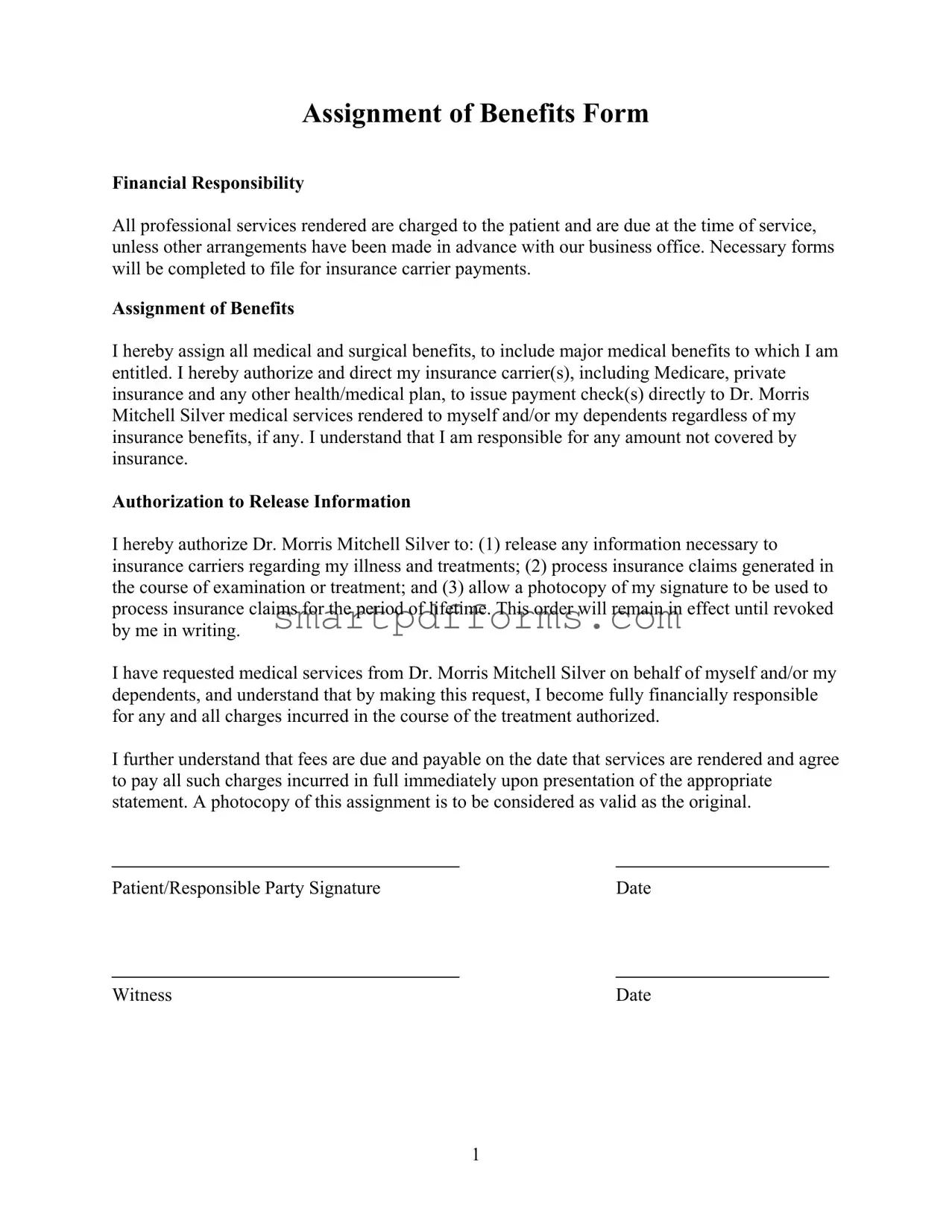Assignment of Benefits Form
Financial Responsibility
All professional services rendered are charged to the patient and are due at the time of service, unless other arrangements have been made in advance with our business office. Necessary forms will be completed to file for insurance carrier payments.
Assignment of Benefits
I hereby assign all medical and surgical benefits, to include major medical benefits to which I am entitled. I hereby authorize and direct my insurance carrier(s), including Medicare, private insurance and any other health/medical plan, to issue payment check(s) directly to Dr. Morris Mitchell Silver medical services rendered to myself and/or my dependents regardless of my insurance benefits, if any. I understand that I am responsible for any amount not covered by insurance.
Authorization to Release Information
I hereby authorize Dr. Morris Mitchell Silver to: (1) release any information necessary to insurance carriers regarding my illness and treatments; (2) process insurance claims generated in the course of examination or treatment; and (3) allow a photocopy of my signature to be used to process insurance claims for the period of lifetime. This order will remain in effect until revoked by me in writing.
I have requested medical services from Dr. Morris Mitchell Silver on behalf of myself and/or my dependents, and understand that by making this request, I become fully financially responsible for any and all charges incurred in the course of the treatment authorized.
I further understand that fees are due and payable on the date that services are rendered and agree to pay all such charges incurred in full immediately upon presentation of the appropriate statement. A photocopy of this assignment is to be considered as valid as the original.
Patient/Responsible Party Signature |
Date |
1

